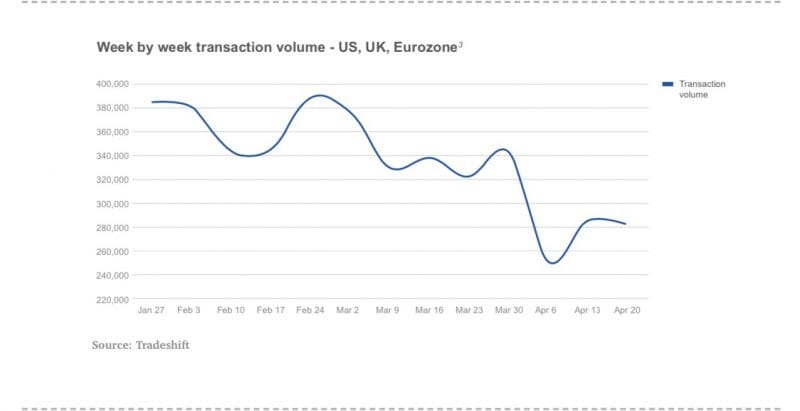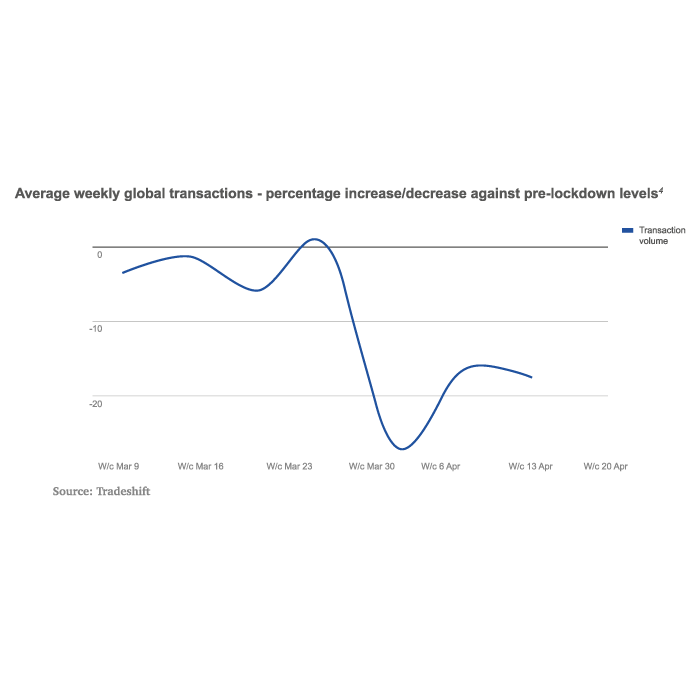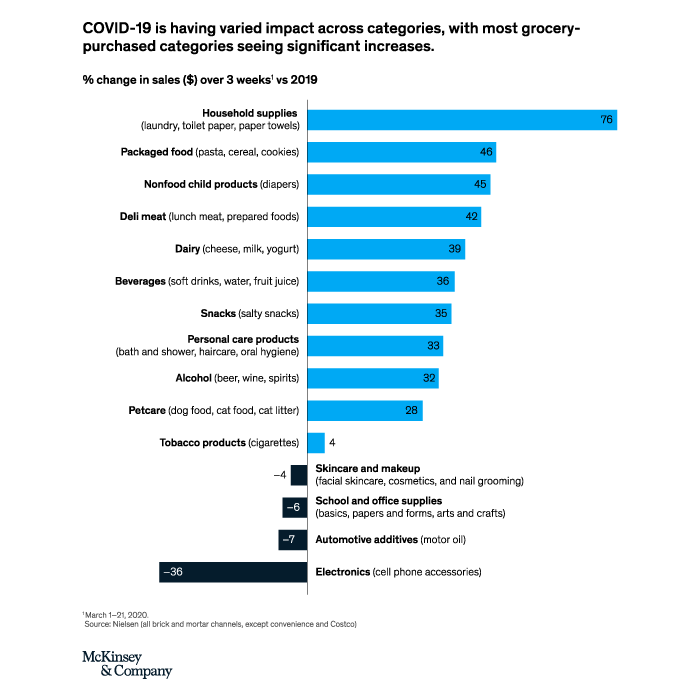
COVID-19 has wrought unprecedented disruption for global supply chains, with 75% of companies reporting some form of disruption, including longer lead times and delays in receiving orders1. Images of empty shelves, deserted airports, etc. splashed around social media bring home the grim reality. According to data from supply chain management platform Tradeshift, trade has flatlined in regions under lockdown, and the effects will continue to linger in the coming months2.



Steps to be taken by retailers and CPG manufacturers to combat the crisis
| EVALUATE | ASSESS | RECALIBRATE | RESPOND |
|---|---|---|---|
| Evaluate the extent to which changes in consumer behavior will impact their categories, channels, and brands during and beyond this crisis. | Assess what actions they can take now to calibrate their demand forecasting models quickly. Adjust for the forecast errors that are happening and will continue to occur in the models’ forecasting horizons. | Recalibrate supply and demand levers to improve business performance while also preparing for the new consumer behaviors which will be the ‘new normal,’ post-crisis. | Respond to this highly anomalous behaviour of COVID-19, due to which their traditional forecasting models are over-correcting their forecasts. |
A quick guide to forecasting and planning
Forecasting and planning are imperative, especially for retail and CPG business. These are the methods that help create strategies and tactics to achieve business goals like sales targets and inventory sell- throughs.
There are numerous benefits of forecasting and planning; for instance, an analysis of purchase pattern history and projections of future customer demand can help retailers manage channel store merchandise inventory. Planned daily optimizations for price, promotion, and markdown, among others, ensures optimal profitability irrespective of the season. Forecasting and planning also help optimize shelf space, product fulfillment, and manpower. Accurate forecast of demand – by the hour, day, location, promotion, and price change, can help make important decisions pertaining to inventory, staffing needs, call centers, and fleet crew.

The COVID-19 crisis has tested the resilience of every business, and those with strong foundations in data-driven decision making are adapting to the change and recovering faster with strategies suited to the situation. Even when the crisis is past, data discipline will hold organizations in good stead – no matter what the circumstance.
References:
- https://www.weforum.org/agenda/2020/05/this-iswhat-global-supply-chains-will-look-like-after-covid-19/
- Image: https://www.weforum.org/agenda/2020/05/this-iswhat-global-supply-chains-will-look-like-after-covid-19/
- Image: https://www.weforum.org/agenda/2020/05/this-iswhat-global-supply-chains-will-look-like-after-covid-19/
- Image: https://www.weforum.org/agenda/2020/05/this-is- what-global-supply-chains-will-look-like-after-covid-19/
- https://www.mckinsey.com/industries/consumerpackaged-goods/our-insights/rapidly-forecasting-demandand-adapting-commercial-plans-in-a-pandemic
- https://www.edgeverve.com/the-edge-quarterly/wheresight-meets-might/







